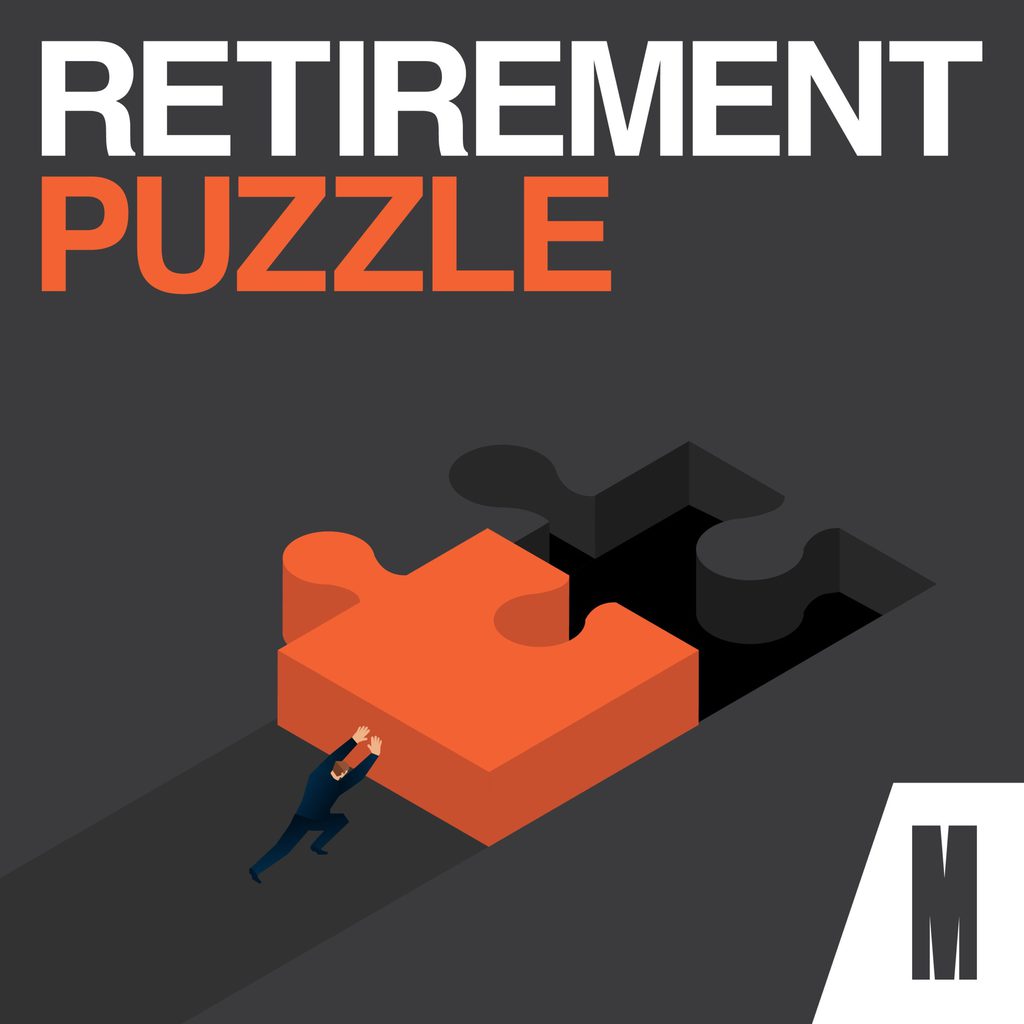Nga Pham:
Hello, everyone. Welcome to the Retirement Puzzle podcast, brought to you by Monash Centre for Financial Studies. This podcast explores the current and critical trends in the pension sector and tries to explain how they impact us all.
My name is Nga Pham, a research fellow at MCFS and I am also one of three co- hosts for Retirement Puzzle podcast.
In this episode, as your host today, I am talking about the challenge of ensuring citizens save for their retirement and how different pension systems achieve it. The Australian system is considered effective, sound and broadly sustainable, according to the latest Australian retirement income review, but there are areas for improvement.
Especially when it comes to accessing retirement savings for housing purposes and having retirement benefits as a lifelong income stream. One country we can learn from is our neighbour Singapore. My guest is Professor Joseph Cherian from the National University of Singapore.
Joseph Cherian is a globally recognised expert on investment management. Currently a Professor at the National University of Singapore, Joe is a former member of the Executive Committee at Credit Suisse Asset Management in New York, where he was responsible for investing over $60 billion in client assets. Joe’s extensive experience includes various advisory appointments at the Central Provident Fund, the highly regarded vehicle for retirement in Singapore. For the past four years, Joe has also been serving as a member of the advisory board of the Mercer CFA Institute global pension index. So hi, Joe, great to have you here with us.
Joseph Cherian:
Hi Nga.
Nga Pham:
The central Provident fund is a compulsory comprehensive savings and pension plan for working Singaporeans and permanent residents to fund their retirement, health care and housing needs. It is a savings scheme with mandatory employers and employees contribution. So Joe, as you have a had appointments related to the Singaporean central Provident fund, the CPF, can you please tell us about the CPF? What are the key features of the retirement income system in Singapore and what role does the Singaporean CPF play in that system?
Joseph Cherian:
Thank you again, Na, I indeed can. The CPF system, as you mentioned, is a mandatory national social security savings system that recognises self reliance, but with ample government help thrown in. What makes it useful is it’s full practical features or what I call four pillars. First is the flexibility, it provides a government subsidise and fully tax exempt, I repeat tax exempt savings scheme where the interest rates can go up to as high as 6% per annum for part of your savings. It also utilises part of your retirement savings for housing. IE you have the option to withdraw amount from the savings for housing purposes and you also have the option to invest in CPF screened investment schemes, if you are seeking higher risk adjusted returns over and above the savings rate offered by the government. Secondly, there’s the CPF Life scheme. That’s a government life entity scheme that automatically converts members cumulated retirement savings sum to retirement income for life.
Joseph Cherian:
Of course, since it’s subsidized, it’s up to a cap, the government will not offer this live program for the full amount, but up to a cap. Thirdly, there’s this housing monetization program where basically you can generate additional retirement income over and above CPF Life by monetizing the equity in the home that you purchased within Singapore. The scheme is called the CPF Lease Buyback Scheme, which is like a reverse mortgage scheme found in many other countries. Finally the fourth pillar, it incorporates a healthcare savings and insurance scheme. So those are the four pillars of our CPF retirement scheme.
Nga Pham:
I really like the model because it considers home, health, at the same time wealth into retirement for people. So how do you evaluate the current system in Singapore?
Joseph Cherian:
Well first of all, it’s a national system, it’s a mandatory, so it’s a one-pot thing. I mean, there are other supplementary programs and so on, but the CPF is national mandatory system that everyone contributes to. So firstly it passes the integrity component with flying colours. Adequacy it also is quite good and I’m using what the Mercer CFA Institute pension categories in that context but there may be a bit of room for improvement on the sustainability side. Partly due to the lack of a basic public pension scheme that provides for a basic or minimal income for all.
Secondly, the lack of breadth. The CPF only covers Singapore citizens and PR’s, so non citizens cannot contribute to the CPF, albeit they do have another program called the supplementary retirement scheme. It’s not tax exempt, it’s tax advantaged, but it’s not fully tax exempt at the point of withdrawal.
Nga Pham:
So yes, Joe, as you mentioned before at the retirement age, Singaporeans can transfer a part of their savings into a lifetime income stream through CPF Life. This is an important aspect of your system that Australia can learn from having at least a component of a retirement savings lasting for life. Not just until life expectancy really protects us from outliving our savings. I think in Australia a few people purchase longevity products in retirement that pay income for their entire lifetime. Most Australians choose a lump sum payment of benefits or an account-based pension. Now account based pension is a regular income stream, however we understand that it only lasts as long as the savings does so it is not a guaranteed income for life.
Nga Pham:
The Australian government has required super funds to offer a comprehensive income product for retirement – I would call that CIPRO for short – by July, 2022, which is next year. So until now not many super funds have managed to offer a CIPRO. Some will choose to design CIPRO products in-house and some will outsource. Could you please share with us some key feature of CPF Life in Singapore and what you think could be applied to Australia?
Joseph Cherian:
Yes Na. I am a big fan of the CPF Life, but again, to create such a life annuity product, it’s an insurance product, except it’s managed by the government, you need some amount of risk pooling, so you need a critical mass of people, of different demographics, different cohorts, different health conditions pooling into this program to make it successful because I was the national mandated program, everyone participates every Singapore citizens and PR’s. So you have the cross section of the size for risk pooling purposes, so that’s one of the reasons why it’s doable here. In other countries like the US they have private life annuity and term energy products, but you fall into this problem of a lot of these energy products are costly, although those costs are coming down from what I understand, and secondly is counter party risk.
Joseph Cherian:
What if the insurance provider goes into bankruptcy or something, then you have a problem. So the CPF Life is different because its government administered, its key features are flexibility. You have a range of plans you can choose, either you can draw all the income for yourself in retirement for life or you can choose a beneficiary to get some part of it a residue amount of it. You can also choose an inflation proxy, it’s called the escalating product. They don’t offer direct inflation hedging, but they do offer long-term inflation hedging protection. So they call it the escalating product and you can also choose the payout age, the start age of your payout. That allows us, we know America also has this feature, if you delay the starting date, you’ll get more income in retirement for life. So that’s the first choice feature, the flexibility part. Second is it’s very affordable.
Joseph Cherian:
As I told you, it’s income for life, I mentioned earlier, it’s income for life. Secondly, there’s no minimum premium, you can put whatever amount you’ve saved into the live product X up to a cap and finally, if you don’t choose a beneficiary, the actually fair enmity residue of value is returned to the estate, not the full savings amount, but the actual repair value, which is the way most insurance annuity product works. So that’s a affordability part. Finally it’s a cost efficient and sustainable program. Since its government run life entity scheme, the government tries to keep the cost as low as possible and the income is guaranteed until death.
Nga Pham:
So I think it’s quite interesting to learn about how there’s CPF Life is structured in Singapore. When you emphasise on the scale is of food by the government and it has a large pool of people for the government to pool the risk. So I think because of the scale, the risk is managed and also the cost could be lower than the private sector. So we can see that it seems that the longevity risk is transferred from the individual to the government. So in this low return environment do you think that it would be a question of sustainability for the government to run such programs or such schemes?
Joseph Cherian:
That’s a very good question and point you raised, first of all, you need the scale and the diversity in the participants and so one way in which you achieve that is to pull programs together. I know you all have a private sector run system, but if there’s a way in which they can pool and get the sort of risk-sharing elements to the fall, I think it’ll help keep costs and risk down for the super funds. On the government’s involvement the government doesn’t have to be involved in every step of the way. One thing that the private sector cannot hedge very well is longevity risk. So the government could provide some kind of cost effective longevity risk insurance to the private sector providers that means directly to the super funds to say look, if this goes beyond a certain maybe mortality table rate, we will provide the guarantee in providing income, something along those lines is what I would recommend.
Nga Pham:
Do you have any other advice for our super funds in terms of trying to pull their customer or member base together and also trying to seek some government support or insurance for longevity risks?
Joseph Cherian:
I think it’s a little bit expensive to expect private pensions to provide income streams for life when the longevity risk component cannot be hedged, so I do think that some kind of combination strategy that’s required. Private sector administered income stream, but with some guarantees provided by the government. So that if say people live beyond a threshold, let’s say what mortality tables say they will maybe a few years beyond that the government would provide the guarantee and kick in the income stream beyond that. That way it makes it a bit more palatable for the private sector to take it on. I’m hoping the CIPR are the comprehensive income product retirement program that’s going to be launched by July, 2022 in Australia, I’m hoping that the program will include some type of conversion from cumulative sum at retirement to income stream in retirement.
Joseph Cherian:
That’s the right way to think about it because it’s what I call a combination or a hybrid defined contribution, defined benefit program, you contribute and in a self-directed manner, in a personal account all the way through your working life up to retirement and then it converts to a defined benefit like pension or income stream for life in retirement. I think that’s the right solution, it’s not one or the other, but a combination of the two and maybe the government has some role to play without removing the role of the private sector.
Nga Pham:
I do hope to see those features coming out in our CIPR products offered by the super funds next year. So while some benefit must be preserved for retirement, Singaporean residents can access part of their retirement savings for specifying housing, medical, educational expenses. The situation in Australia is a bit more restrictive, Australians can access only a very small amount of super savings for home purpose to pay for a deposit for their first homes mortgage, for example, via the first home super saver scheme. That has to be from their voluntary contribution, not from the compulsory contributions. So how is home ownership integrated into the current pension system in Singapore?
Joseph Cherian:
Okay. I will start by qualifying that in every program there’s always the pros and the cons, so it’s not all good. Let me talk about the good first okay. There’s something called the CPF housing scheme, it allows you to draw down one of your retirement accounts, there are three or four different accounts, including the medic save and health care account. You can draw down from one of those retirement accounts to buy either a leasehold public housing plan, Singapore has got some fantastic public housing plans. They’re called HDB plans or you can use the money to buy or build a private residential property in Singapore, assuming you have access to the land to build such a property. In addition, you can use it to pay ancillary fees associated with that purchase of the house.
Nga Pham:
Oh, so from what you have shared, my understanding is that Singaporeans can access a part of their retirement savings for home deposits, home mortgages, stand duties, and even for house construction, is that right?
Joseph Cherian:
That is correct to buy, build, pay down payments or deposits, pay off mortgages, stand duties, legal fees, the list is fairly long.
Nga Pham:
So do you think that this is a unique features of the Singaporean in system or have you seen similar policies anywhere else?
Joseph Cherian:
The CPF housing scheme is unique in the way it’s run because a majority of preponderance of Singaporeans buy public housing. So that’s where the money goes and it’s a very affordable yet well constructed set of housing, so that’s unique. In the US they do it slightly differently. There are tax advantage programs that encourage home ownership. I lived there for many years, I also took advantage of that. It’s outside of the retirement system, for example, your bank mortgage interest deductions up to a cap can be deducted against your income taxes. In addition, when you sell your home, you have a reduced capital gains tax and up to 0%. it used to be 0% up to half a million if I’m not mistaken, basically it’s 0% if you’re in a lower income bracket, have lived in the home as your primary residence and held it for a long period of time, then you get the 0% capital gains tax.
Nga Pham:
Yeah, so what you’re saying is maybe there’s a similar focus on promoting home ownership, both in Singapore and in the US right?
Joseph Cherian:
That’s correct. That’s absolutely right.
Nga Pham:
It seems that Singapore has a much higher household savings and home ownership rate than Australia. For example, Australian household savings rate is only 3.4%, whereas in Singapore, it is about 15.3% and in terms of home ownership about 65% of households in Australia own their home, but in Singapore home ownership is more than 90% and this is based on 2020s figures. So in Australia, we have also seen a declining rate of home ownership among younger and lower to middle income Australians over the last 40 years. So if this situation persist, more people will have to rent into their retirement. We also see coming out from the retirement income review last year, we know that renters are disadvantaged by the system as they have higher housing costs and they do not have the home as an asset that can be drawn on in retirement. Do you think that the way the system allows people to access their retirement savings for housing purpose has contributed to that high level of savings and high level of home ownership in Singapore?
Joseph Cherian:
Your conjecture is correct. First the savings rate being high and the second about housing, let me explain a little bit. The savings rate for CPF can add up to about 37% of one’s annual salary, this 37% includes both your contribution and the matching contributions by your employer, so it’s a pretty high savings rate. It changes over time and it declines over time, but that’s as high as it gets 37%. That’s the first thing. Secondly the constant programs should top up the government when they have a surplus or if it’s a time of capital financial crisis and markets are down a bit, the government has topped up programs for those who have low balances. So there’s also these kinds of things that the government does to make sure that you have a robust account. On the housing part let me say that the government, which most of you know has been in power since independence, it’s the same government.
Joseph Cherian:
So the continuity and stability helps propagate some of these thinking, it has been a big thing about owning your home from the time of independence, even when I was a kid, I’ve just remembered this whole concept of owning your own home has been pushed through campaigns and ads and so on. Then when you allow that high savings set aside in your retirement account, if you allow that to pay for the deposit down payment for sales taxes or legal fees and so on, stand duties, it makes it a bit easy to cross the hurdle of home ownership. So I would say that a combination of this factors, the high savings rate and government incentives and the CPF housing scheme include the fact that the public housing scheme, which are affordable are very well constructed. I think it helps explain your conjecture.
Nga Pham:
Yes, I think the approach here is quite comprehensive in the way that on the one hand, the government tried to promote the demand side by promoting the importance of home ownership but at the same time, the government also support on the supply side by providing very well-constructed HDB flats, as you mentioned. So would you be concerned at all about the potential at adverse impacts when people are allowed to access their retirement savings for housing purpose? Is there anything you do not like in the Singaporean system in that regard?
Joseph Cherian:
Well, sometimes I’m concerned and I’ve even written about this before, I’ve voiced it when I was on the panel and so on. My concern is if you are allowed to use a retirement account to buy a real asset, as part of your store of wealth towards retirement, you should be as willing to monetise or dig into the equity of the home to provide for some of your retirement. It’s a closed loop system, if you take something out now there’s less available at retirement. So if you’re as willing to monetize the value of your home or the equity in your home through a reverse mortgage or lease buyback scheme, I would say, I have no worries. It’s a great system, it’s closed loop, it’s self sustaining, everyone’s happy. The problem is I’ve observed this not just at Singapore, but in America, wherever I’ve lived, there’s always a natural temptation to buy a house that is slightly bigger than what you can afford when you have access to your retirement savings.
Joseph Cherian:
Remember you’re putting 37% of your savings aside. It looks like a large amount of money with compounding at 4%, 5%, 6% interest, after a while it begins to look like a large pot of money, but we all know the illusion of money. So the point is you say, oh, there’s a lot of money there, let me take some out. How about a bit more out? Then you get tempted to take as much as you can out to buy that home and that has an impact on accumulation of your income for retirement. That’s one problem. I think I’ve observed in America, most Americans are very willing to sell their home, downsize, they’re willing to enter the reverse mortgages but when I came back to Asia after many years, I realised Asians a little less willing to do that.
Joseph Cherian:
So it becomes a little bit asymmetric. I take money out of my retirement account, and then at retirement, I’m not going to monetise the home. It can create an underfunding problem, that’s what I’m concerned about. The second problem is a little bit more, how should I put it? It’s not sinister, but some people they’ll always be some segment of society who says, I do not want to put aside money for retirement, don’t force me to do something. They say, I don’t want you to take my money for retirement and it’s a very small segment. In most countries I’ve operated in people enjoy the retirement scheme, especially for the tax advantage programs. Now that said for those who don’t believe in such system, what do you think is the temptation? The temptation is to withdraw as much as possible they can and that’s my other worry. So that’s two ways in which you can end up depleting your account and thus reducing the amount we have for income in retirement. However good a CPR life system you have, if you don’t have enough cumulated, you won’t have enough income in retirement.
Nga Pham:
So what will be your advice to the Australian government if they want to open up superannuation savings for housing purposes?
Joseph Cherian:
I like to draw behavioural theory, don’t provide temptations, I think we should reduce the temptation. One way you can do that as behavioural literature says is to segregate this, you put them in different buckets. Retirement is for retirement including health care and all that stuff, housing is a separate bucket, education’s a third bucket. In America they separate all those buckets out. It’s all different programs and ex legislator by Congress with different numbers, different schemes, and they’re all tax advantage, to different degrees. So my advice is unless you are as well calibrated, coordinated and governed like Singapore, which is a much smaller country, it’s very hard to replicate the model in a larger country with multiple private sector funds. It’s not necessarily to dig into retirement system, but just setting up a different pot, which is also tax advantage but it’s clearly stated for housing but it’s completely segregated from the retirement investment and savings decision. That’s my advice.
Nga Pham:
I totally like that idea because I think the behavioural literature about, for example, mental accounting when you put things into different buckets, and then you know that this is how much you have for housing, this is how much you have for education and then you tend to just access or use within the means.
Joseph Cherian:
Exactly yes.
Nga Pham:
So Professor Joseph Cherian, it has been a very interesting talk today. Thank you very much for sharing with us your expertise.
Joseph Cherian:
You’re welcome Na, I enjoyed myself thoroughly.
Nga Pham:
Thank you very much.
Nga Pham:
Life long income healthcare financing and home financing means a secure retirement for everyone. As longevity has increased substantially compared to what the previous generations had, governments and super funds in Australia need to take on a more proactive role in assisting retirees with managing their longevity risk. Singapore has provided us with a very good model of the government, providing a lifelong income stream to protect people from outliving their savings. On another front, while the home is a most important component of voluntary savings, it seems that the current retirement savings system is not open enough to help promote home ownership in Australia. Rising property prices put further pressure on housing affordability. So Singapore is an interesting example, when we think about whether people should be allowed to access their retirement savings, to buy a home and that policy could help Australians with housing affordability, but it should be well-designed to serve that purpose. So there are definitely things that Australia can learn from our neighbor Singapore, when it comes to their comprehensive social security savings system.
Nga Pham:
Thank you for listening to the Retirement Puzzle Podcast from Monash Center for Financial Studies. If you have enjoyed it, please tell your colleagues and friends about us. You can subscribe to our show anywhere you listen to podcast, and don’t forget to leave us a review. If you want to collaborate with us on retirement related issues, please get in touch with us @mcfsinfoatmonash.edu.




